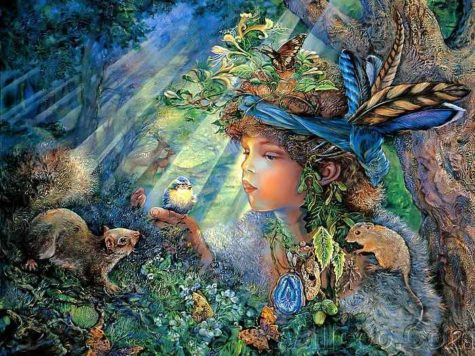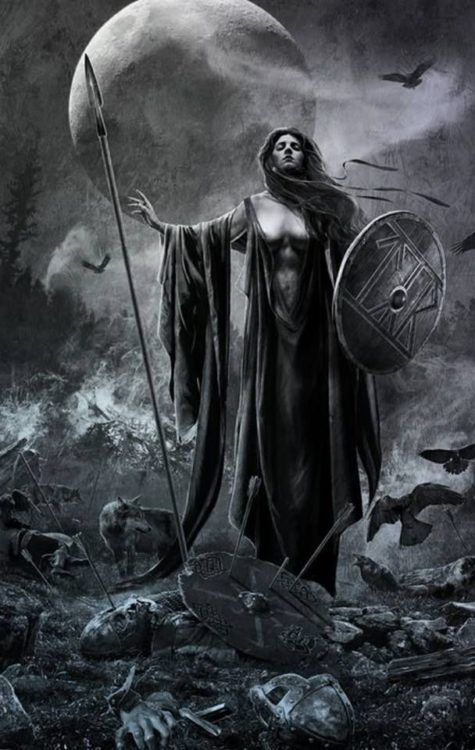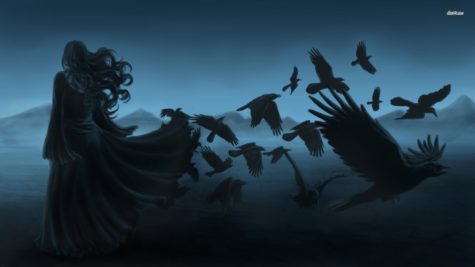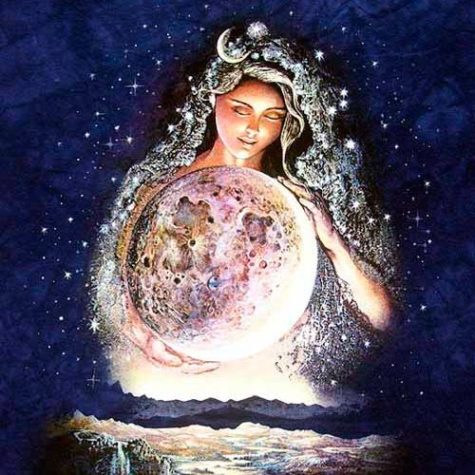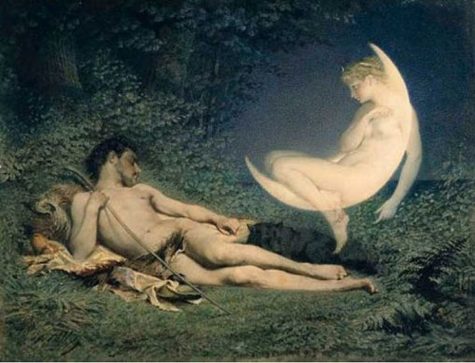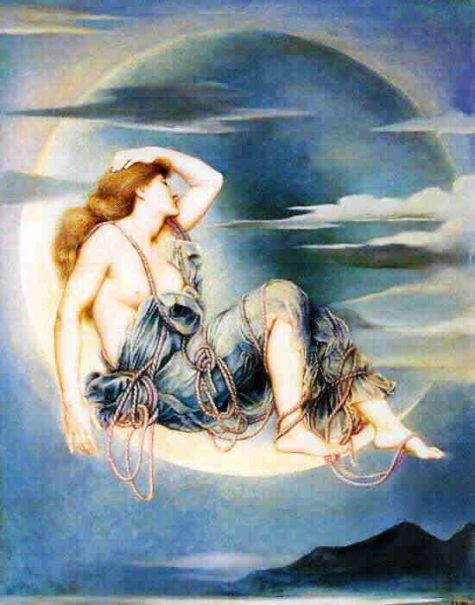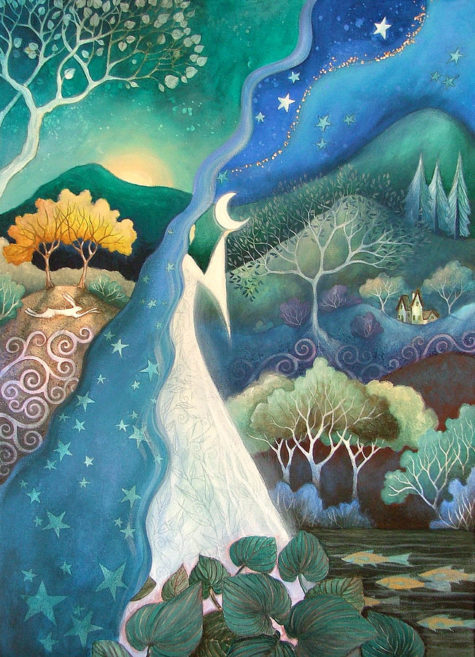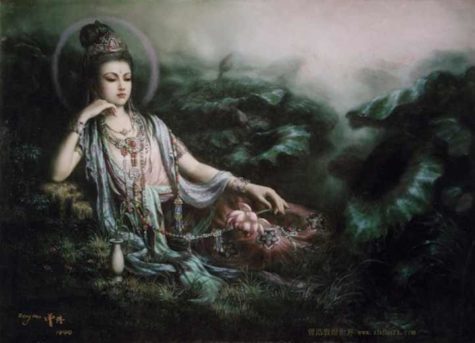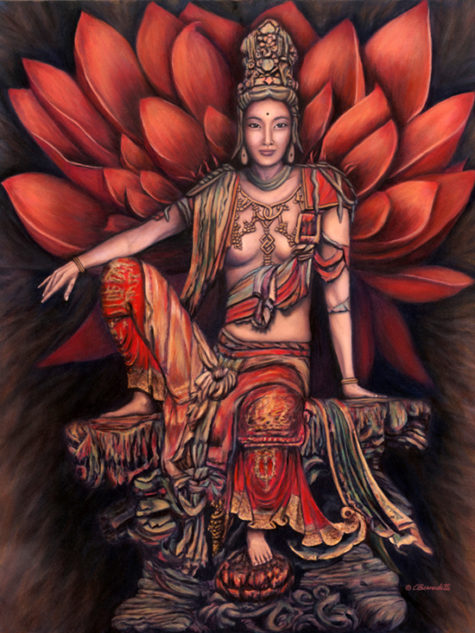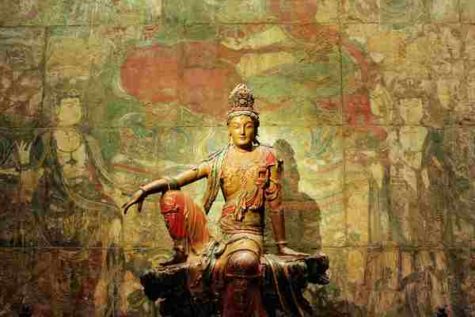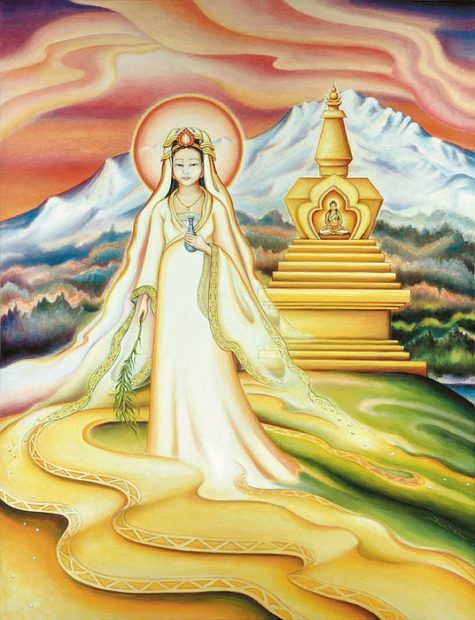Monthly Archives: April 2018
Many spells, especially those that request healing or protection for animals, or those to locate lost animals, suggest consecrating the animal to a spirit. Although there are also many others, the following have earned a reputation as renowned animal protectors. Incorporate them into your spells as needed:
- Spirits that protect cats: Artemis, Bastet, Freya, Hecate, Lilith
- Spirits that protect big cats (tigers, lions, leopards, etc): Dionysus, Durga, Hathor, Kybele, Sekhmet
- Spirits that protect dogs: Artemis, Hecate, Ogun, Saint Roch
- Spirits that protect horses: Anat, Demeter, Epona Poseidon, Rhiannon, Rla-mgrin (Hayagriva)
- Spirits that protect toads: Agwe, Heket
- Spirits that protect snakes: Athena, Ezili, Freda, Dahomey, Lilith, Mami Waters, Simbi, Lady Asherah
- Spirits that protect cows: Brigid, Hathor, Hermes, Isis, Lakshmi, Maeve, Shiva
- Spirits that protect fish: Atargatis, La Baleine, La Sirene, Yemaya
- Spirits that protect pigs: Demeter, Seth
- Spirits that protect animals in general: Aphrodite, Artemis, Baba Yaga, Faunus, Hathor, Lilith, Saint Anthony
Note: Saint Anthony is the spiritual detective – request his assistance when a pet is missing.
Found in:
Element Encyclopedia of 5000 Spells
- Also known as: Morrigu, Morrigna
- Origin: Ireland
- Birds: Corvids: Crow, Raven, Roo
- Creatures: The Morrigan owns a herd of enchanted magickal cattle
- Color: Red
- Day: Samhain
The Morrigan is a Celtic goddess of battle, strife, and fertility. Her name translates as either “Great Queen” or “Phantom Queen,” and both epithets are entirely appropriate for her. The Morrigan appears as both a single goddess and a trio of goddesses.
The Morrigan is a powerful spirit of birth, death, sex, destruction, and fertility. She is among the goddesses associated with Ireland’s well-being and sovereignty. Her name is variously translated as:
- Great Queen
- Sea Queen
- Phantom Queen
- Terrifying Queen
She is an oracular, prophetic spirit who can reveal the future and anyone’s destiny – that is, if she feels like it. The Morrigan is a headstrong, passionate goddess who does as she pleases. She is among those goddesses serving as Washers at the Ford
The Morrigan may be one spirit, a triple goddess, or three manifestations in one. The Morrigan may name a triad of distinct goddesses – usually Badbh, Nemain, and Morrigan, but sometimes Macha is included.
The Morrigan is most famous as a war goddess. She may instigate battle or meddle with it. The concept of minding her own business does not exist: Battle is her business. Anything that captures her interest is her business. The Morrigan is also renowned for giving sound battle advice. She advised the Dagda on how to deal with the fumorians.
The Morrigan determines war’s outcome, bestowing victory to whichever army or warrior she favors, but she has a reputation for being capricious. Her favors can never be taken for granted. Her frenzied war fury unnerves armies. Her shriek is deadly.
The Morrigan frequently appears in the ornithological guise of a hooded crow. She is one of the Tuatha Dé Danann (“Tribe of the goddess Danu” or the land of the Faries) and she helped defeat the Firbolg at the First Battle of Mag Tuireadh and the Fomorians at the Second Battle of Mag Tuireadh. She is often read about in books that are about the Fae.
Her many manifestations include, but are not limited to:
- A beautiful woman
- A hag.
- A crow
- A deer (doe or stag)
- A white heifer with red ears and no horns
- A black eel long enough to coil three times around the legs of Cu Chulain, a great man.
She appeared to the hero Cu Chulainn (son of the god Lugh) and offered her love to him. When he failed to recognize her and rejected her, she told him that she would hinder him when he was in battle. When Cu Chulainn was eventually killed, she settled on his shoulder in the form of a crow. Cu’s misfortune was that he never recognized the feminine power of sovereignty that she offered to him.
She appeared to him on at least four occasions and each time he failed to recognize her.
- When she appeared to him and declared her love for him.
- After he had wounded her, she appeared to him as an old hag and he offered his blessings to her, which caused her to be healed.
- On his way to his final battle, he saw the Washer at the Ford, who declared that she was washing the clothes and arms of Cu Chulainn, who would soon be dead.
- When he was forced by three hags (the Morrigan in her triple aspect) to break a taboo of eating dog flesh.
More than just a battle goddess, the Morigan is also a goddess of life, birth, and sex. She is sometimes identified as a mermaid. On Samhain, the beginning of the Celtic dark half of the year, the Morrigan stands astride a river with one foot on either bank to engage in the Great Rite – sacred, transformative, ritual sex – with the Dagda (Ireland’s All-Father).
Sources:
- Redbubble
- The Encyclopedia of Spirits
- Also known as: Mene (as in month or menstruation), and Latin Luna
- Origin: Greece
- Stones: Moonstones and Selenite (literally “moon rock”)
- Favored people: She is the matron of magicians, sorcerers, witches, and moon-gazers.
Selene is an ancient goddess of the moon. Comparatively little information regarding Selene’s veneration and rituals survives although she is described as “great in magic” and was apparently invoked in magic spells. Her parents are Titans, Hyperion and Theia. Helios, the sun, is her brother. Many of her functions were later transferred to Artemis as Helios’ were to Apollo.
Selene bathes in the ocean before riding up to the sky in her chariot every night, variously driven by a pair of white horses, bulls, or mules. She pulls the full moon across the sky. Alternatively she rides a horse sidesaddle. Sometimes Selene has to hide from a dragon, indicated by a lunar eclipse or absent moon. Or perhaps Selene is just making time with that dragon. Selene is an amorous goddess with many lovers including Pan and Zeus, with whom she had numerous children.
Her most famous love affair is with the young shepherd Endymion, the male sleeping beauty. Selene placed him under an eternal sleep spell so that his entire existence consisted of sleeping and making love to her. Selene spends her days in the Anatolian cave in which Endymion sleeps.
Selene’s name is etymologically related to a word meaning “light.” In her guise as the full moon, Selene sheds light on problems and mysteries.
- Manifestation:
Selene is the goddess of the moon, but she also is the moon. Selene may manifest as a woman or a cow, but you can also gaze at the moon and see her. As a woman, she is described as being very beautiful. She has wings and wears a diadem.
A scholarly article about the Goddess Selene:
Also called Mene, or Latin Luna, Selene was the goddess of the moon, or the moon personified into a divine being. She is called a daughter of Hyperion and Theia, and accordingly a sister of Helios and Eos; but others speak of her as a daughter of Hyperion by Euryphaessa, or of Pallas, or of Zeus and Latona, or lastly of Helios. She is also called Phoebe, as the sister of Phoebus, the god of the sun.
By Endymion, whom she loved, and whom she sent to sleep in order to kiss him, she became the mother of fifty daughters; by Zeus she became the mother of Pandeia, Ersa, and Nemea . Pan also is said to have had connection with her in the shape of a white ram.
Selene is described as a very beautiful goddess, with long wings and a golden diadem, and Aeschylus calls her the eye of night. She rode, like her brother Helios, across the heavens in a chariot drawn by two white horses, cows, or mules. She was represented on the pedestal of the throne of Zeus at Olympia, riding on a horse or a mule; and at Elis there was a statue of her with two horns.
In later times Selene was identified with Artemis, and the worship of the two became amalgamated. In works of art, however, the two divinities are usually distinguished; the face of Selene being more full and round, her figure less tall, and always clothed in a long robe; her veil forms an arch above her head, and above it there is the crescent. At Rome Luna had a temple on the Aventine.
Ritual to Selene
- Color: White and silver
- Element: Water
Altar: Lay with a white cloth, on which is sewn moons of silver in cycle from new to dark. Set out two white candles rubbed with jasmine oil, a silver tray with round white cakes, a glass pitcher of goat’s milk, a glass chalice of white wine, a glass of clear anise liqueur, a round mirror, and a silver bell.
Offerings: White foods. Milk, poured in libation. A promise to aid those suffering from mental illness or emotional confusion.
Daily Meal: Nothing but milk or rice milk to drink. Rice. Custard. Cream soups and sauces.
Invocation to Selene
Lady of the Full Moon
White Lady whose rays shine on us
Lighting our path through the darkness
Round as a full belly
Pregnant with possibilities,
White as mother’s milk
And snow on high mountaintops,
Moon mother who sings to us
Lullabies of imagination,
Cascade through our dreams,
Sail us through the ebb and flow
Of our heart’s tides,
And light our spirits
With your serene love.
Chant: Luna Lucina Lumen Lumen
The cakes are passed around, saying, “Eat of the Mother’s sweetness.” Then the pitcher of milk is passed around, saying, “Drink of the Mother’s love.” Then the chalice of wine is passed around, saying, “Drink of the Mother’s dreams.” Then the glass of liqueur is passed around, saying, “Drink of the Mother’s song.” Then the remainder are poured out as libations and the silver bell is rung six times.
Sources:
The Goddess of Mercy
She Who Hears the Cries of the World
- Also known as: Guan Yin, Kuan Shih Yin, Phat Ba Quan Am, Sung-Tzu-Niang-Niang
- Alternative spellings: Quan Yin, Guan Yin, Kuan Yin,
Kwan Yin is the very essence of mercy and compassion; among the most beloved and well known of all spirits. Technically, Kwan Yin is considered a Bodhisattva, venerated as such throughout the Buddhist world but she also possesses the stature of a goddess and many consider her to be one, not just modern Western goddess devotees but also in East Asian folk religion.
Kwan Yin is a spiritual phenomenon; she transcends religious boundaries and is also found in Taoist and Shinto shrines, even in the shrine of her main rival, the Lady of T’ai Shan.
- Kwan Yin is a great favorite of independent practitioners and goddess devotees everywhere.
- Kwan Yin protects the helpless, particularly women, children and animals.
- She bestows good health and fertility.
- She guides and protects travelers especially seafarers and sky travelers.
- In recent years, Kwan yin has emerged as the guardian of air travel.
- She protects against attack from either animals or humans.
- She breaks cycles of rebirth, punishment and retribution.
- Kwan Yin provides protection in the realms of the living, the dead and anywhere else.
Kwan Yin’s true identity is subject to debate. Officially she is an aspect of the Bodhisatva Avalokiteshvara. The Lotus Sutra, which describes Avalokiteshvara, was among the first Buddhist texts translated into Chinese. Avalokiteshvara translated into Chinese is Kwan Shih Yin. The first Chinese statues of Kwan Shih Yin aka Avalokiteshvara, appeared in the 5th century CE and depict him as a slight, graceful, androgynous man.
Kwan Yin as we know her today first emerged from China’s wild northwest frontier, by the Silk Road, sometime between the 7th and 9th centuries CE and began to move into the Chinese heartland during the 9th and 10th centuries along with detailed legends of her life, which do not correspond to Avalokiteshvara but to the Taoist goddess, Miao Shan. Kwan Yin may really be Miao Shan assuming the official guise of Avalokiteshvara as Buddhism was then socially dominant while Taoism was disparagingly considered folk religion. Her strong identification with horses may also indicate her origins on the western frontier.
Alternatively, many believe Isis, Mary Magdalen, and/or Mary, Mother of Christ traveled the length of the Silk Road, finally emerging as Kwan Yin or that their images may have served as a portal for a frontier spirit. Whoever she is, she is entirely good. The desire of so many individuals and traditions to claim Kwan Yin testifies to her appeal and power.
- Favored people:
Women, children, exiles and travelers but Kwan Yin vows to respond to anyone who calls out her hame in his or her moment of fear or suffering. She offers aid, mercy and compassion to anyone who suffers. She helps not because of who you are, but because of who she is.
- Iconography:
Kwan Yin has many forms. She is typically depicted as a kind, beautiful woman dressed in white. In her fertility goddess path, she carries at least one child. These statues closely resemble images of Isis or the Madonna. Kwan Yin is depicted with one-thousand eyes and one thousand arms indicating her ability to see all and help all. Kwan Yin may be accompanied by her acolytes, a small girl and boy.
However, Kwan Yin is a goddess of the masses. Not everyone can afford a statue, and so Kwan Yin’s name or even her title, the Goddess of Mercy, written on a piece of paper and posted where it is visible is considered just as powerful and effective as an image.
Correspondences:
- Color: White
- Animal: All are sacred to Kwan Yin but especially horses
- Bird: Peacock
- Tree: Willow
- Gem: Pearl
- Metal: Iron
- Mount: Lion or hou, a mythic lion-like creature; dragon; giant carp; dolphin
- Number: 19
- Sacred days: The first and 15 of each lunar month, the New Moon, and the Full moon.
Attributes: Rosary, lotus, a sutra vase from which pours compassion, a willow branch symbolizing her powers of exorcism (according to Chinese shamanism, demons flee from the presence of willow); fish basket
Feast days: The 19th day of the 2nd Chinese month is Kwan Yin’s birthday. The 19th day of the 6th Chinese month commemorates when Kwan Yin became a Buddha. The 19th day of the 9th Chinese month, the day she first wore her sacred pearls.
Offerings: Oranges, pomegranates, spices, incense; Iron Goddess Oolong tea; offerings on behalf of needy women, children, and wildlife.
Note: Kwan Yin is a vegetarian. Her image on restaurant menus often indicates that vegetarian fare is served. Give appropriate offerings (i.e. don’t give her steak). Many devotees adopt a vegetarian diet in her honor but even those who do not, traditionally eat vegetarian on her sacred days.
Kwan Yin epitomizes goodness. No one is kinder, more compassionate or more benevolent. Kwan Yin doesn’t possess a single malevolent or malicious impulse. She is also exceptionally responsive, as evidenced by her world-wide veneration. If you are new to spirits or are generally afraid of them, Kwan Yin may be the right spirit for you.
From: Encyclopedia of Spirits
